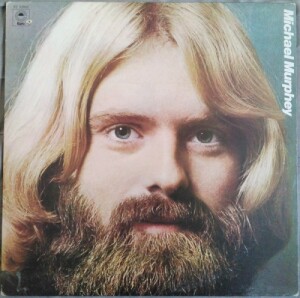 Before Michael Murphey traded in his outlaw country cred and became Michael Martin Murphey, the Americana Adult Contemporary singing cowboy, he created a couple of my favorite LPs from the 1970s. Now that two of his first three albums are available on major streaming platforms, I decided it’s time to unburden myself of my feelings about his self-titled third album.
Before Michael Murphey traded in his outlaw country cred and became Michael Martin Murphey, the Americana Adult Contemporary singing cowboy, he created a couple of my favorite LPs from the 1970s. Now that two of his first three albums are available on major streaming platforms, I decided it’s time to unburden myself of my feelings about his self-titled third album.
A native of Texas, Murphey rubbed elbows with a number of Lone Star musicians in his college years, and even more musicians as a grad student in Los Angeles in the mid-60s. He was in a band with future Monkee Michael Nesmith, and later contributed the song “What Am I Doing Hangin’ Round” to The Monkees’ album Pisces, Aquarius, Capricorn & Jones Ltd., which sold over five million copies. Eventually tiring of the So-Cal music scene, he hot-footed it back to Texas about 1971, just in time to be part of the nascent Outlaw Country movement. He was signed to A&M Records by legendary producer Bob Johnston, who produced his first several albums, including the stellar Geronimo’s Cadillac in 1972, Cosmic Cowboy Souvenir in 1973, and after moving to Epic Records, Michael Murphey in 1974, all recorded in Nashville with session players including a few latter day A Team members like Buddy Spicher and Kenny Buttrey.
I have to confess that I first became aware of Murphey when nearly everybody else in the listening public did, with the release of his fourth album Blue Sky Night Thunder and its multi-platinum single “Wildfire.” It was a new sound at the time, a polished version of what we now call Americana, filled with lushly recorded, very romantic songs. When I started digging into his back catalog I realized the earlier, rougher albums were much more to my liking. I haven’t listened to Blue Sky Night Thunder in about 40 years, but I still regularly pull out and spin my LPs of Michael Murphey and Geronimo’s Cadillac. And now I can listen to them just about anywhere (and incorporate the songs in my playlists) on Spotify!
Hey boy, would you like to have the Philharmonic in your song?
We can pay the finest musicians to play along.
That’s what they tell you when they don’t want you by yourself
But I won’t pitch my tent on the main street of hell.
As on the previous two albums, Murphey here mixes up the types of music he loved, a lot of which he had in common with other Texas singer-songwriters of the era: rock, classic country, Western ballads, gospel, folk. He kicks it off with some soulful rock on the defiant “Nobody’s Gonna Tell Me How To Play My Music.” That’s the first verse in the pull quote above, and it’s quite the rave-up with a big band, a full backing choir, and yes some ironically placed philharmonic strings. This theme seems to have been a popular sentiment among musicians in the early ’70s as things transitioned from the heady days of the anything goes ’60s to the corporate dominated arena rock ’70s — compare this one with Jimmy Buffett’s “Makin’ Music For Money,” also cut in 1974.
Michael Murphey doesn’t have a “Geronimo’s Cadillac” or “Cosmic Cowboy” hit single, but the closing track “Southwestern Pilgrimage” has at least as long a pair of legs as either of those, presaging as it did his turn to acoustic cowboy fare. (It’s one of the best and earliest examples of the adage that the final track on an album often points forward to the musician’s next effort.) It was my first favorite on the album, but lacks the poignancy and more universal themes of those that appeal to me more, nearly 50 years on: the gospel-folk “Healing Springs” with its use of water as a metaphor for art; or the gentle poetry of the quietly acoustic “Rye By-The-Sea” with its roundelay structure; or the spiritual yearning of “Observer.” Speaking of gospel, two sides of that coin are presented in the back to back “Holy Roller” and “Good Ol’ Natural Habits.” To me, though, the strongest songs are the pure Texas outlaw country songs: “You Can Only Say So Much” wouldn’t be out of place on a Michael Nesmith solo record, and both “Ace In The Hole and the played-for-laughs “Fort Worth I Love You” are just plain shit-kicking country rockers to rival any of the era’s best.
Michael Nesmith went on to cover at least one more of Murphey’s songs including one of the best, “Texas Morning,” sagely pairing it with a psychedelic cover of the old Sons of the Pioneers chestnut “Tumbling Tumbleweeds” on his final outing with the First National Band. In the end, I much preferred the truly cosmic and literate version of urbane country that Nesmith continued to turn out over the cowboy fare Murphey turned to. But after three albums of steadily declining chart numbers, Murphey on his fourth, Blue Sky Night Thunder, found an opening to a music career that has sustained him longer than I suspect he’d have had with his idiosyncratic take on country rock, even if the latter was more appealing to fringe fans like me.
You can find this and other early Michael Murphey albums on streaming platforms including Spotify and YouTube.
(Epic, 1974)
